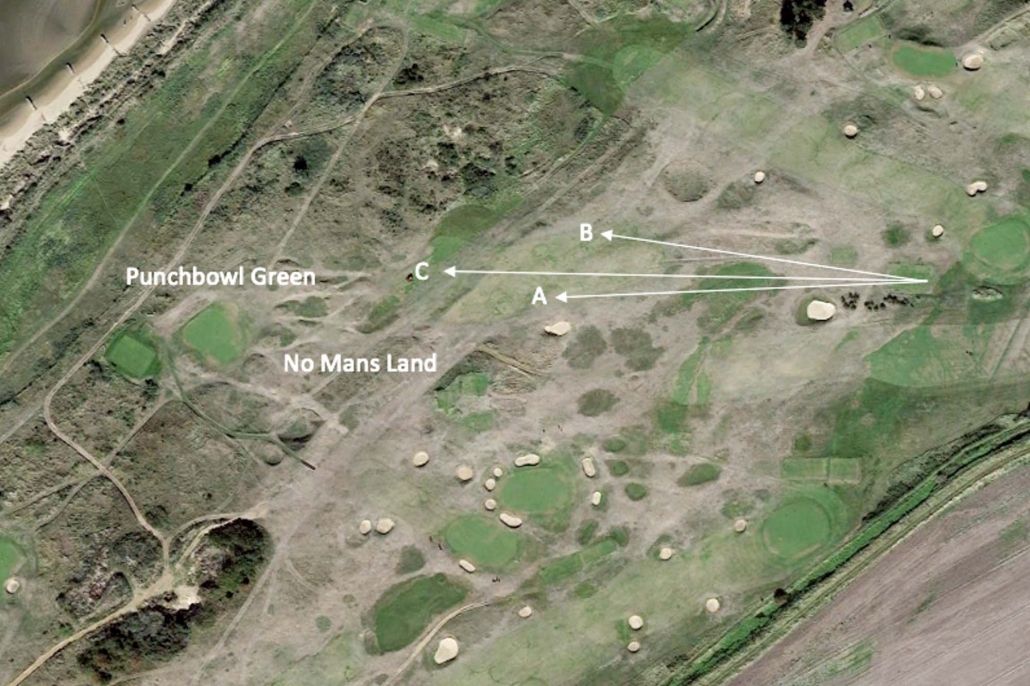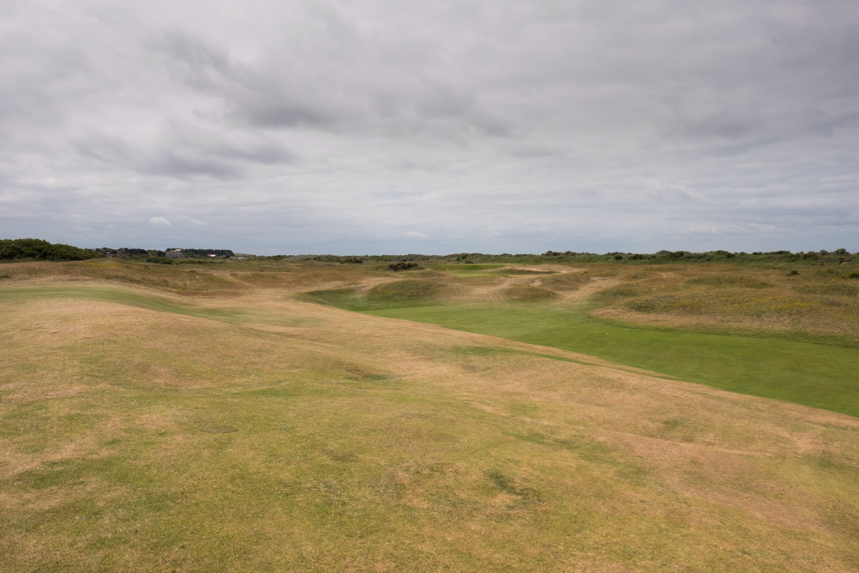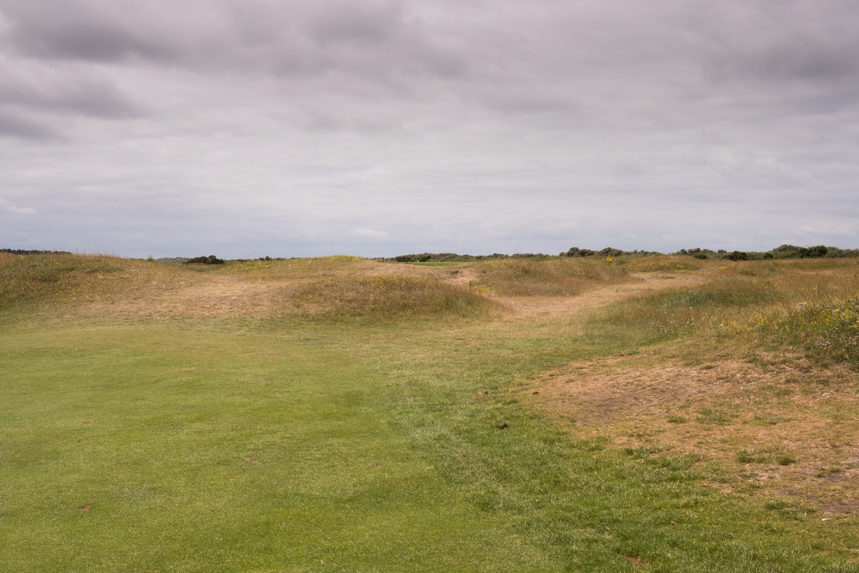Hole 13 at Hunstanton Golf Club was designed to challenge the best. The 17th and 18th are renowned, but it is the 13th, upon reflection, that makes an impression. The hole is a 387 yard two shotter draped diagonally over a ridgeline. It’s uphill to the precipice then three steps down before a forced carry over dunes to a punchbowl green. Visibility of the green is gained only from perched atop the ridgeline but this leaves you with a longer approach. A shorter approach is at the cost of visibility. Here you cannot have your cake and eat it too. Whether it be the tee shot, the approach or the elements themselves, 13 at Hunstanton delivers.
Tee Shot
The tee shot affords you instinctively 2 options, reach the precipice or blow over it. Not aggressive enough to reach the plateau and your approach shot to the green is completely blind. Too bold and you run off the plateau down the other side and again you face a blind approach to the green. The hole requires you to think, then make a decision, not just the first time you play it but each time.
Tom Simpson wrote there should be “zones from which (the) green can be best approached.” This is a case and point of that design dynamic. Prince Hermann Ludwig Heinrich von Pückler-Muskau said ‘Time is not able to bring forth new truths but only an unfolding of timeless truths.” Great holes stand the test of time and the advancement of technology… at least so far.
Line
The ideal line is to the left side of the fairway to the top of the ridge. A shot of roughly 195 yards. Taking on the fairway bunker and successfully placing your shot will leave the shortest possible approach shot with a full view of the green below. (A) Play away and you incrementally increase the approach to the green with the potential of a longer approach than tee shot. (B) The other option is to try to overpower the hole. However, in doing so you risk hitting the downslope and running through the fairway 260 yards away. With keen conditions and a decent strike and you could easily find your self in trouble. Even if you find the lowest tier, the shot is completely blind albeit shorter. (C)
The photo below is taken from position B. Position A is atop the ridge on the left. Position C is below in the collection area of green grass.
This photo shows the view of the green from the lowest tier, position C.
Elemental Design Features
- Natural landforms and interesting features. It is rich in golfing features such as a ridge, dunes and a punchbowl green.
- Demand for thought and execution. Pick your challenge then deliver.
- Inability to overpower the hole. An accurately placed shot is rewarded more handsomely than power.
- Placing shots or accuracy is rewarded, not merely length.
- Forced carry over the 100 yards is visually intimidating but somewhat easily overcome.
- The hole gives all a rewarding thrill of overcoming a seemingly daunting challenge.
- The ability for every class of player to play to their strengths.
Conclusion
The club is proud of its Championship past and is determined to retain that accolade moving forward. Patric Dickinson described the blind approach to a “green like one of those little lost civilizations in some valley encircled by impassable mountains.” This green site and the ground surrounding it along with its superb use of other golfing features’ make this hole one of outstanding architecturally merit. Ability to challenge golfing generations and the onslaught of technology is a hallmark of greatness. One can only wonder how long these holes can resist the momentum of technology and distance. Until now, the battles have been won by the 13th, may we never allow 13 at Hunstanton to lose the war.




